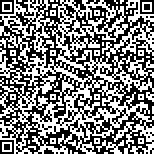下载中心
优秀审稿专家
优秀论文
相关链接
摘要

随着星载面阵CMOS探测器的广泛使用,使得获取超时相数据成为可能,这为新型对地遥感工作模式带来新的发展机遇。本文不再局限于采用单一技术解决单一技术指标的传统解决问题的方式,系统性地提出一种面向星载面阵CMOS相机的新型成像方式,利用面阵CMOS相机连续快速曝光在极短的时间内获取同一观测区域的超时相序列数据,通过图像重建的方式,实现一揽子的图像质量提升,即同时实现虚拟数字时间延迟积分TDI(Time Delay Integration)、调制传输函数MTF(Modulation Transfer Function)补偿和空间分辨率GSD(Ground Sampling Distance)提升。这种新型成像方式的优点是,可以改善星载光学相机是探测器受限系统的窘境,进而在不改变光学系统的情况下,通过求解一个病态方程,实现对地遥感图像空间分辨率与成像质量的综合提升。基于实验室的靶标仿真实验数据、基于低轨光学遥感卫星OVS-1A、吉林一号视频03卫星和高分四号卫星的真实数据实验结果表明,无论是信噪比,图像清晰度还是空间分辨率都有明显提升。这种新型成像方式已被中国后续某地球同步轨道光学成像卫星所采用,可以预见的是,这种成像方式不仅可以使得在轨卫星发布更高分辨率与更好图像质量的产品,盘活在轨卫星的探测资源;在实现同样空间分辨率与图像质量的前提下,可以有效降低光学相机载荷的体积与重量,进而可以有效降低未来光学卫星的研制成本。
Spaceborne cameras are often called as detector resolution limited system. This is because the detector array generally suffer under sampling. Therefore, high frequency information beyond the detector sampling frequency will leak into the detector array, i.e. every remote sensing image will include some high frequency components. Since the platform keep drifting and vibrating even in the geostationary orbit, every remote sensing image contains unique high frequency information. By collecting those high frequency components from a sequence of images, a high resolution image can be reconstructed. This is the theoretical basis of super resolution technique. Moreover, with the widespread use of spaceborne CMOS array detectors, it is possible to obtain hyper-temporal data, which brings opportunities for spaceborne CMOS Cameras. A new hyper-temporal imaging mode for spaceborne CMOS cameras was proposed in the paper. By using a CMOS camera to continuously and quickly capture sequence of data, many frames of images within the same area can be extracted. By solving an ill-conditioned equation, high resolution images with improved quality can be achieved, that is, digital time delay integration TDI (Time Delay Integration), Modulation Transfer Function (MTF) and Super Resolution can be implemented at the same time. In general, engineers would like to set long expose time for spaceborne cameras to ensure SNR for remote sensing images. However, long expose time inevitable bring blur which severely decrease the quality of remote sensing images. The advantage of this new imaging method is that it can freeze the images to avoid blur as speckle imaging technique widely used in astronomy community. To reconstruct an improved quality and high resolution image, we need a good understanding of the whole process of capturing LR images. Since spaceborne cameras can only capture the reflected light from the surface of the earth and the reflected light suffers from the air turbulence and diffusion from the optical lens system. Therefore, mathematically modeling the image degenerating procedure is very important. As we all know that image restoration is an ill-conditioned problem. In terms of solving the ill-conditioned problem, a mixed sparse representations is used. In general, it is very difficult to find a common sparse representation for remote sensing images because of complicated ground features. In the paper, a remote sensing image is regarded as a combination of sub-image of smooth, edges and point components, respectively. Since each domain transformation method is only capable of representing a particular kind of ground objects or textures, a group of domain transformations are used to sparsely represent each sub-images. By using the generalized sparse representation, image restoration can be solved through the traditional L1 norm based optimal algorithm method the iterative thresholding algorithm. Experimental results based on the low-orbit optical remote sensing satellite OVS-1A, Jilin-1 video 03 satellite and the geostationary optical satellite GF-4 show that both the signal-to-noise ratio, image clarity and spatial resolution have been significantly improved. The proposed method holds promise to bring new remote sensing imagery products with high resolution of improved quality for satellites in orbit. Moreover, the method can also save the cost for future planned satellites by reducing the volume and weight of the optical camera payload.

